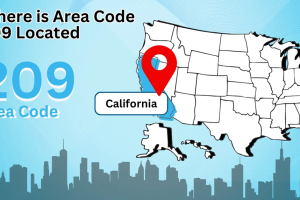Content Attributes
Reverse logistics is a term used to describe the process when items are moved back from customers to producers. These include business practices that occur through transportation between distribution endpoints. For example, typically involves items transferred from a retail location back to a warehouse or factory.
Examples of reverse logistic transactions that are used include the recovery of parts, outlet sales, or refurbishment. However, with that being said, one might still get confused over what occasions something would have to be returned. In that case, you don’t have to worry. In the following blog, we will provide three examples of reverse logistics. So, continue reading to learn more.
Recovery of Parts
Also known as cannibalization, it involves returning a product that has reached the end of its product lifespan. This item would then be recycled and used to make new products for resale. In general, the process includes disabling a used item and then inspecting its parts for reuse in other operations.
In these instances, it’s worth noting that an item doesn’t necessarily need to be scrapped for parts. Instead, it can still be in a good enough condition for repair. Generally speaking, the whole process can be quite rigorous, with each item having a certain quality standard needed for reuse.
An example of an ideal cannibalization retailer would be Surplus Motos. In their work, they retail spare parts for used motorcycles. Through their process, the company dissembles, decontaminates, and cleans all the components of the motorbikes they receive. These parts are then recorded as photographs and sold at a sale price that’s 30 to 70 percent cheaper than newer parts.
The company has a distribution center in Gaillac, France. Over there, they have a mini-load system to retrieve boxes from the Mecalux Group. In total, this automated system enables them to hold up to 300,000 parts, with a fair volume objective of at least 10,000 motorcycles per year.
Refurbishment
Refurbishment or re-manufacturing refers to the reuse of something that no longer works. The process discourages destroying defective items. Instead, the product could experience an update or be reworked into something new. This is commonly done to resell products that customers have to purchase back.
The conditions for refurbishment are pretty straightforward; the merchandise just doesn’t need to be significantly damaged by the previous owner, and they must be able to undergo a reconditioning process.
An example of a company that uses refurbishment is ‘Rent the Runway’. Formed in a New York-based fashion rental company, this brand offers pieces from over 550 designers on its website. These are all stored within a multi-tier shelving warehouse in Interlake Mecalux, and the company comprises entirely of items returned by customers.
Outlet Sales
This type of reverse logistic transaction includes customers returning constituent pieces of a product or whole items to a company for re-sale or recycling. A well-known example of this would be the international brand of IKEA.
Over the years, IKEA has received a great deal of success from reverse logistics. They have done this by allowing customers to return furniture, fixtures, light bulbs, and even textiles, which are then reused by the brand.
The Bottom Line
At the end of it all, there would always be brands that utilize reverse logistics techniques. Its methods encourage sustainability while providing profitable outcomes for a company. With the rapid development of external pressures in the distribution market, reverse logistics are becoming a viable option for many future investments. Put simply, it’s a bright and upcoming business model with a lot of promise.



